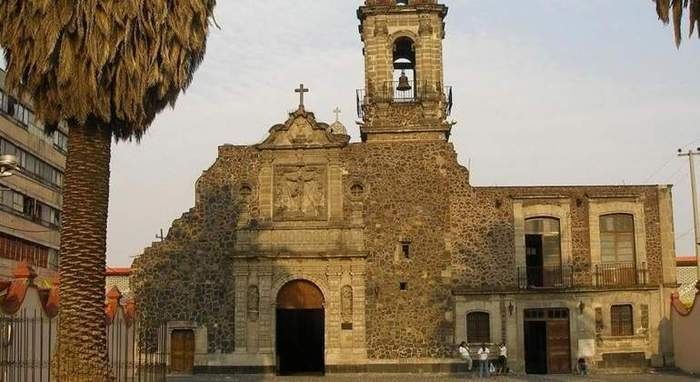The neighborhood of La Merced, heir of the Ottoman-Jewish culture in Mexico City
The old Ottoman Empire and the La Merced neighborhood of Mexico City have a little-known relationship that has been alive for more than a century.

The old Ottoman Empire and the La Merced neighborhood of Mexico City have a little-known relationship that has been alive for more than a century thanks to Jewish immigrants who settled in this area of downtown Mexico City. Within the framework of the "Al Andalus International Encounter in Mexico: Survival and Imaginary", which takes place from May 27 to June 2, we wanted to emphasize the memory of this community through a tour in which different places were visited, in one way or another, they had links with it.
Among the places analyzed is the Plaza de Loreto, one of the hearts of La Merced and where a part of the Jewish group of Ottoman origin that settled in Mexico City met. To one side of this space is still observed what was the first synagogue of the capital, a building founded in 1923, as well as the building of the first Hebrew school in the metropolis. However, the Semitic heritage of La Merced does not end here. According to the preserved documentation, in the Plaza de La Santísima the first Jewish entity of the city was founded, a charity, at the beginning of the 1910s. Similarly, in the vicinity of the street of Guatemala, there is still the possibility of accessing different neighborhoods in which, as confirmed by the testimonies, lived diverse Jewish families.
In any case, during the visit, not only physical spaces were shown. Some material resources generated by this community were also exhibited, such as photographs, migratory documents, or the invitation to a "Bar Mitzvá", a traditional Jewish rite of a 13-year-old boy. The aforementioned celebration took place in 1926 in a neighborhood of La Merced, located on Calle Loreto, number 7. The first Jews who came to Mexico came from the Ottoman Empire, a state that extended its dominion between 1299 and 1923 and that, in the moments of greatest splendor, came to control various territories of Southeast Europe, the Middle East, and North Africa.
They arrived from 1900, as indicated to Efe Mónica Unikel-Fajsa, a researcher on the legacy of the mentioned collective. They came from places still under Ottoman rule that corresponded in part with the current territories of Syria or Lebanon, spaces of clear Arab tradition.
On the other hand, the Asquenazis, the Jews who came from Central and Eastern Europe, arrived later, around the 1920s, so when they entered Mexico "they already met with established Arabs or Ottomans, worked with children", added Unikel-Fajsa. Jews from Ottoman territories had to leave their territory just starting the twentieth century in search of freedom and new opportunities.
"The ultra-nationalist project of the Ottoman Empire prevented minorities from retaining their particularities, and all the boys had to go to military service, which was obligatory and very dangerous, returning some of them mutilated or crazed."
Therefore, they decided to seek new horizons, Mexico being a good alternative to their situation. In this way, they arrived in the capital and settled in the neighborhood of La Merced, where they recreated their customs. And although there were some complicated years, due, among other factors, to the fact that the Mexican Revolution was still in progress, they were able to develop and bring their families. The neighborhoods they inhabited served as spaces for prayer and study, and for setting up workshops, and much more.
The "Al Andalus International Encounter in Mexico: Survival and Imaginary" host various artistic, academic, and training initiatives on the Arab-Andalusian legacy in the country.




